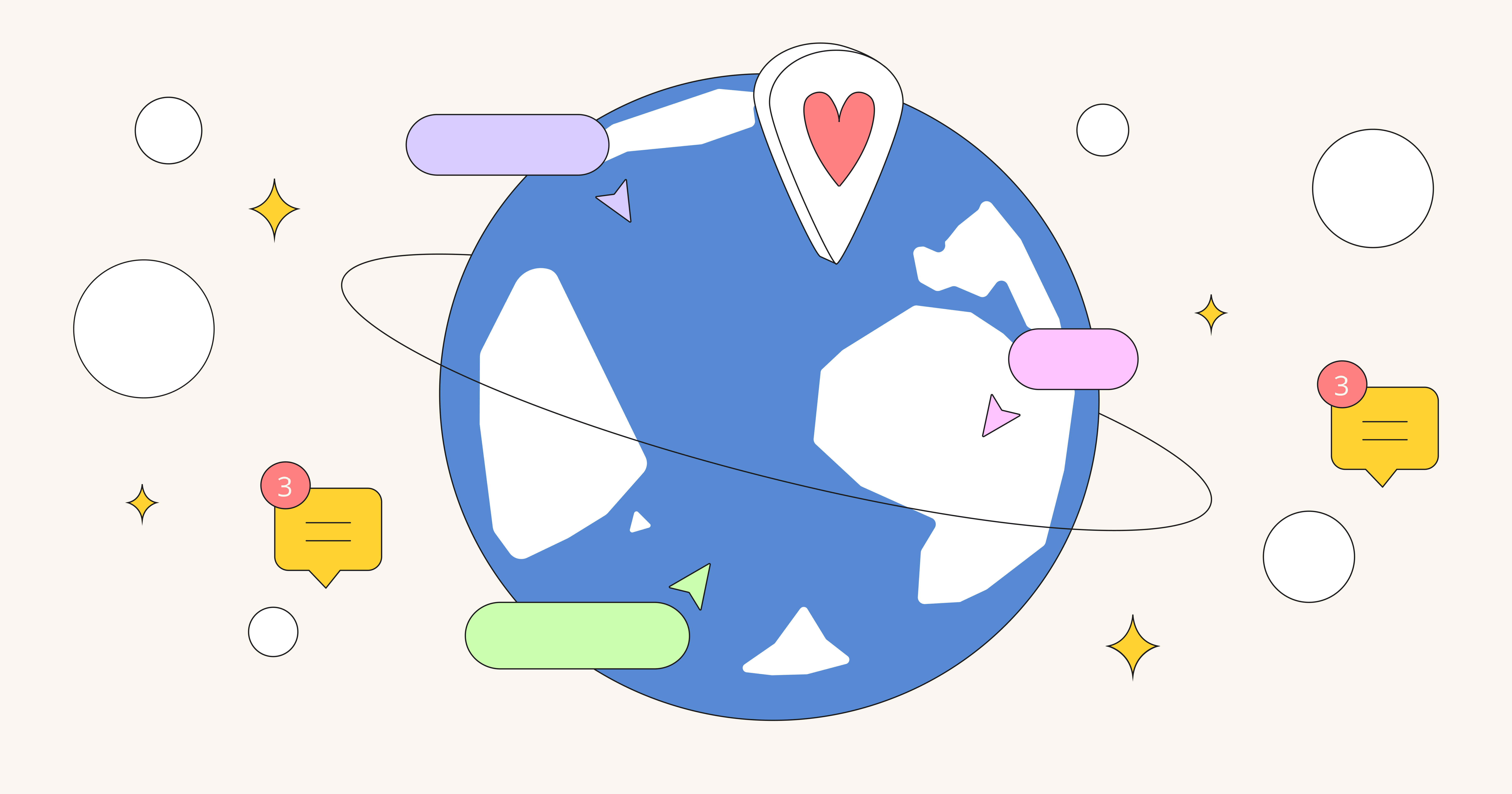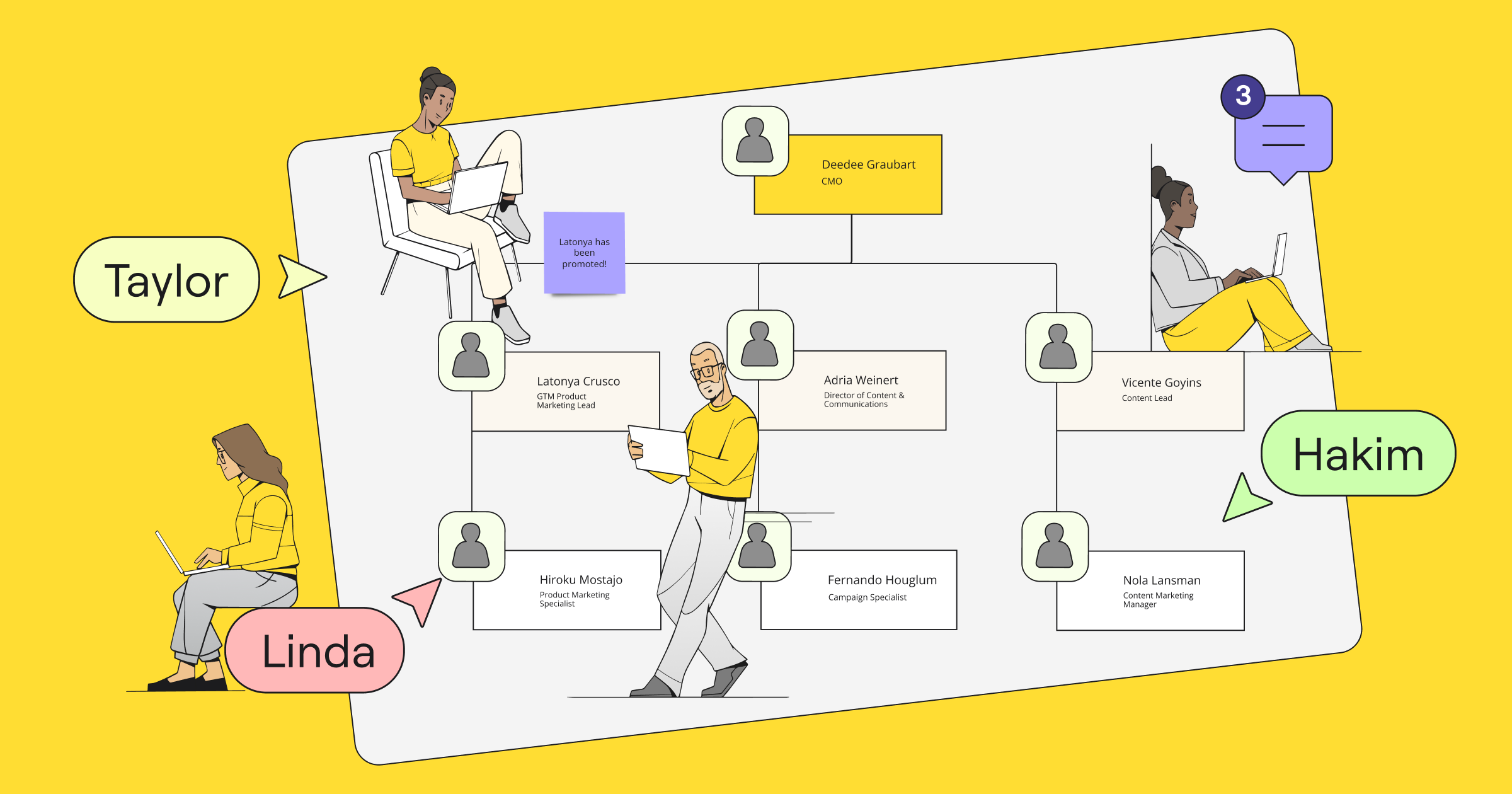The word “workshop” sparks visions of creativity, collaboration, and energy — people rolling up their sleeves to build something great together. In contrast, “presentation” has completely different connotations, triggering groans and eyerolls as people imagine tired slide decks and endless droning.
It’s true that workshops and presentations are two different things with two different goals. A workshop aims to build something new while a presentation aligns participants with the presenter in an effort to gain consensus.
But while presentations and workshops serve different purposes, they don’t need to be quite so far apart in terms of overall enthusiasm and participation. Your presentation can borrow some workshop strategies and amp up the energy level, and be just as engaging, exciting, and informative.
We chatted with Shipra Kayan, Principal Product Evangelist here at Miro, to learn how to inject more workshop liveliness into presentations while still getting the buy-in needed from the audience.
1. Know your audience and your key takeaways
The only thing worse than a boring presentation is a long, boring presentation. According to Shipra, one of the best ways to build engaging presentations is remember that less is more. Always distill your content down to what’s most relevant and impactful — anything extraneous can wait.
As you plan your presentation, Shipra suggests asking these core questions to ensure your content is crisp, clean, and to the point:
- What is the presentation’s goal?
- Who is the audience?
- What does the audience care about?
- What do you want the audience to take away?
- What do you need from the audience?
These help you stay focused on the most pertinent elements without getting bogged down by details or tangents. It’s also a great gut check to gauge whether a presentation is even the right format for your content.
Finally, since presentations are aimed at getting consensus, feedback, and/or buy-in from your audience, Shipra suggests wrapping up with a clear action item.
“One question I like to ask at the end of presentations is, ‘What is one thing you are going to do to help move this project forward?’” she says.
2. Ditch the boring slide deck
Presentations have become almost synonymous with slide decks packed with way too much text — a recipe for audience disengagement. But there’s a better way.
With Miro, you can present an entire Miro board and easily move between different sections, rather than having to a linear or hierarchical presentation format. This feels far more natural and conversational than a buttoned-up slide deck, and the visual elements hold the audience’s attention.
Plus, if your team is already using Miro for collaboration, you don’t need to spend time copying and tweaking your content for slides. Instead, simply use your existing board and walk your audience through it. With Miro’s Interactive Presentation Mode, you can also collect participant reactions and feedback in real-time during your synchronous presentations, fostering that energetic and collaborative workshop feel.
3. Use plenty of stories
Presentations often suffer from information overload, giving too much data, jargon, and information for anyone to absorb on the spot. This approach can backfire, making the audience feel overwhelmed, disinterested, or both.
What works better? Stories. They’re not only attention-grabbing, compelling, and engaging – they’re powerful and lead to long-lasting memories. Research even shows that when we see or hear a story, the neurons in our brain fire in the same pattern as the speaker’s. It’s called “neural coupling.”
When the goal of your presentation is to achieve consensus, this literal brain power behind storytelling is invaluable. The takeaway: instead of only providing a bunch of data points about why you need to overhaul your customer onboarding process, enrich those stats with a compelling story about a recent customer interaction.
4. Provide adequate time and space for “head nodding”
Traditional presentations are one-sided: the presenter talks, the audience listens, and maybe there’s some dialog in the Q&A. But real consensus doesn’t come from passive listening. It requires active audience participation and engagement — and this is why drawing inspiration from workshops can be a game-changer.
“A good presentation needs to create space for that head nodding,” explains Shipra. “If you want people to be aligned, you need to create space for them to ask questions, disagree, and critique, so you can address those concerns.”
Exactly how you approach this will depend on factors like allotted presentation time and audience size, but here are a few ideas:
- Allow for hand-raising and questions throughout the presentation to improve flow and facilitate discussion.
- Include designated time for questions and answers (if you’re worried about constant questions throwing you off track).
- Use tools like polls and surveys to keep participants engaged.
- Break the audience into small groups for discussions and sharing, in effect building a short workshop into your presentation.
5. Choose wisely between synchronous and asynchronous presentations (or blend the two)
Today, presentations don’t have to happen in real-time. While there are benefits to gathering participants for a synchronous presentation, such as being able to read the room and tailor your delivery accordingly, asynchronous presentations can be equally effective and far more efficient. This is particularly true for remote or hybrid teams, where it’s tough to coordinate schedules. Async presentations also give participants a chance to digest the information, and prepare more thoughtful questions and feedback.
When planning your presentation, think carefully about whether you want to opt for synchronous, async, or a combination of the two.
And don’t worry — an async presentation doesn’t have to sacrifice the lively and collaborative workshop environment you want. Miro’s Talktrack feature allows you to make an audio or video recording as you walk through a board. Participants can interact with the recording while navigating through the board themselves. This gives them a more human feel and builds feelings of connection and engagement between viewers and the presenter.
And when it comes to making the “to async or not to async” choice, Shipra’s typical preference is to get the best of both worlds by making the presentation async and then hosting a real-time discussion about the content. This avoids clogging up people’s calendars with the presentation itself, but still allows for plenty of collaboration.
As Shipra says, “You don’t have alignment just because you gave a presentation. You have alignment when everybody truly feels that they’re coming along with you.”
Give your next presentation workshop-level energy
By the end of your presentation, you want your audience to be on board with your vision – to be fully bought into your mission or your idea.
But getting them there? It doesn’t have to be snore-inducing. Incorporating some workshop elements into your next presentation – whether it’s synchronous, async, or a little bit of both – can make the whole experience more lively and synergetic for everybody involved.




